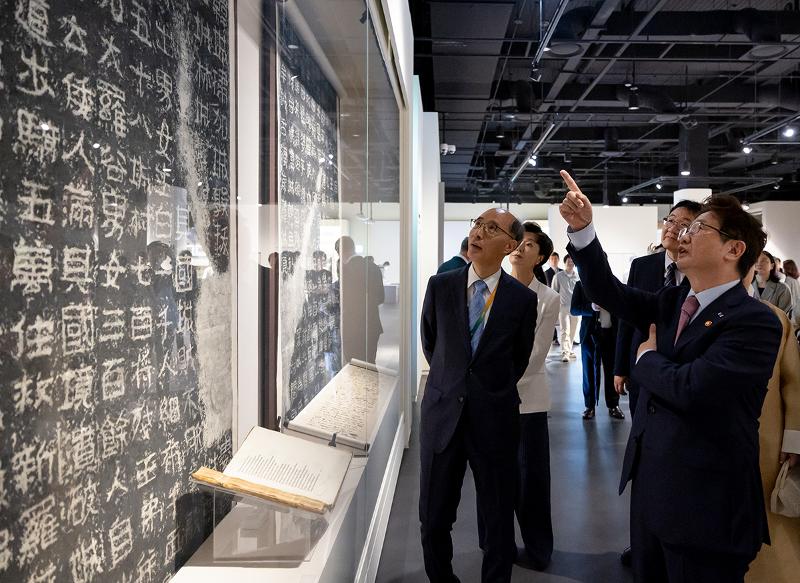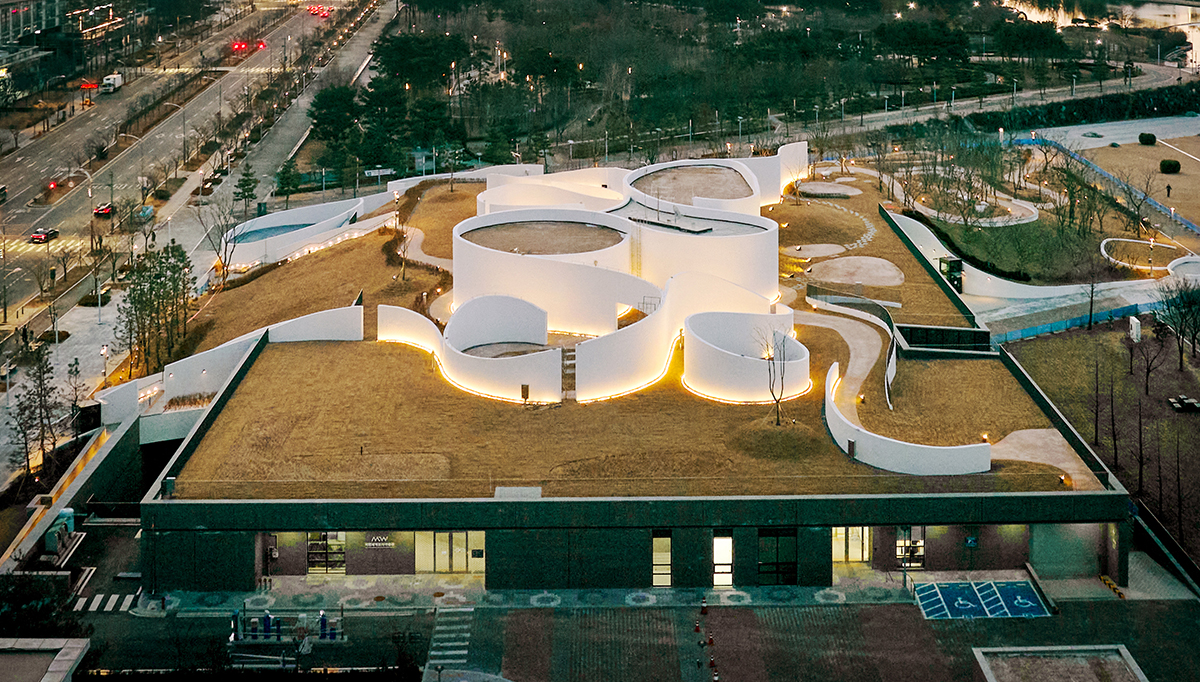
Minister of Culture, Sports and Tourism Park Bo Gyoon (right) on June 29 looks at an exhibit after attending the opening ceremony of the National Museum of World Writing Systems in Songdo International Business District of Incheon's Yeonsu-gu District. (Kim Sunjoo)
By Kim Hyelin with contribution from Choi Seung Hyeon
Photos = Kim Sunjoo
Video = Lee Jun Young
Incheon
The National Museum of World Writing Systems, the third of its kind in the world, has been opened in Incheon.
The Ministry of Culture, Sports and Tourism on June 29 at 10 a.m. held the opening ceremony at the museum lobby. The some 100 attendees included Minister of Culture, Sports and Tourism Park Bo Gyoon, members of the museum's foundation committee including museum director Kim Juwon, donors of related relics and data; experts in related fields like Hangeul, script and printing; and leading officials from relevant organizations.
"The construction of the National Museum of World Writing Systems in the Republic of Korea, whose unique writing system Hangeul is the only one with a clear creation principle, holds special significance" Minister Park said. "We will spare no support to make the museum the most attractive landmark of K-Culture that plays the role of an integrated platform of history and civilization connecting the world's scripts."
Director Kim added, "Through educational programs tailored for the public, we will spread the value of world writing systems and boost understanding of their diversity and related cultures."
The museum is the nation's first and world's third of its kind in the world, following the Champollion Museum in France and National Museum of Chinese Writing in China.

This is the exterior of the National Museum of World Writing Systems in Songdo International Business District of Incheon's Yeonsu-gu District. (National Museum of World Writing Systems)
Shaped like scrolls, the museum has two above-ground floors and one basement covering a combined 15,650 square m. The basement houses the permanent exhibition "Civilization and Writing: A Great Journey" featuring scripts of leading civilizations.
The first floor has an exhibition of the future of writing systems, interactive room for children and outdoor exhibition venue while the second has a cafeteria.
The museum has 244 world script documents and 543 related items. They include tablets recording the ancient Babylonian flood myth of Atrahasis from 2,000 B.C. to 1,600 B.C. written in Akkadian cuneiform and the 42-Line Gutenberg Bible, the first printed Bible in the West using metal type invented by Johannes Gutenberg (1400-68).
Other highlights include the Luther Bible, the first edition of the Wittenberg Bible, or German Protestant reformer Martin Luther's German-language translation of the Old Testament, and Natural History, the world's first encyclopedia about Roman history by author and politician Pliny the Elder.
Also on display is the Hunmaengjeongeum, the domestic braille system invented in 1946 by teacher and Incheon native Park Du-seong.
Explanations on 55 script relics and digital images are available in nine languages -- Korean, English, Chinese, Japanese, Thai, Vietnam, Spanish, French and Arabic.
From June 30, the museum will be open daily except Mondays from 10 a.m. to 6 p.m. Admission is free.
kimhyelin211@korea.kr